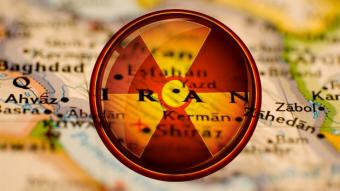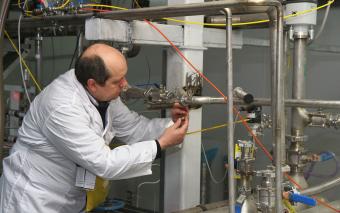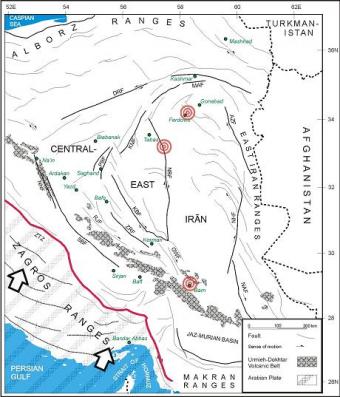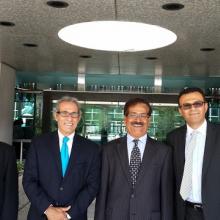Islamic Republic Is Betting on Time
 picture credit Getty's Pictures
picture credit Getty's PicturesThe Five Permanent members of the UN Security Council plus Germany (P5+1) and Iran announced a framework parameters regarding the regime of Islamic Republic of Iran’s nuclear program on April 1st in the run-up to reach a final deal by June 30.
Despite the high optimism of a potential lasting agreement, considering the clerical regime’s track record of walking away when a deal is imminent, this framework, if agreed by all sides could lead to further tensions as the regime, as has always done, will not keep its side of the bargain. They are already offering contradictory interpretation of the mutual agreed long march framework.
In the agreed framework it states, “Iran will receive sanctions relief, if it verifiably abides by its commitments.” However, Rouhani, the regime’s President, said during a ceremony marking Iran's nuclear technology day that no agreement will be signed, “unless all economic sanctions are totally lifted on the first day of the implementation of the deal."
 The framework and the proponents of the deal, mainly the Obama Administration argues that “Iran has agreed to only enrich uranium using its first generation (IR-1 models) centrifuges,” while Iran’s Foreign Minister, Javad Zarif along with the regime’s nuclear chief – also top negotiators - both told a closed-door session of the parliament on Tuesday (following the eight day long talks in Geneva) that “The country would inject UF6 gas into the latest generation of its centrifuge machines as soon as a final nuclear deal goes into effect by Tehran and the six world powers.”
The framework and the proponents of the deal, mainly the Obama Administration argues that “Iran has agreed to only enrich uranium using its first generation (IR-1 models) centrifuges,” while Iran’s Foreign Minister, Javad Zarif along with the regime’s nuclear chief – also top negotiators - both told a closed-door session of the parliament on Tuesday (following the eight day long talks in Geneva) that “The country would inject UF6 gas into the latest generation of its centrifuge machines as soon as a final nuclear deal goes into effect by Tehran and the six world powers.”
Most importantly, the regime’s ultimate decision maker, the Supreme Leader, is signalling again and again that he does not have faith in these negotiations, and believes that a deal cannot be reached by June. He even declared that the military sites would be strictly off limit to foreign inspectors, quite contrary to the IAEA Additional Protocol which Iran has apparently agreed to implement under this framework which would allow inspectors to visit “declared and undeclared nuclear facilities.”
These contradictory statements and past futile negotiations prove that this clerical regime well knows the significance of change in the political landscape in Washington and elsewhere in Europe. Dragging the negotiations beyond next year will certainly mean another couple of years before a new US President is inaugurated to take up the Iran case again while the regime enjoys relaxed sanctions and greater access to international markets in this period. This has prompted the lawmakers, even those from President’s own party, to be very suspicious of the negotiations, the regime’s ultimate objectives. Thus, they have embarked on taking a bold stance against any deal that would ease the sanction regime while still leaving the regime with enrichment capabilities, let alone its plans to develop inter-continental ballistic missiles, support for terrorism and regional instability.
 Seismicity of Iran 1990 ~ 2006
Seismicity of Iran 1990 ~ 2006Bear in mind, that given the transformations in the region, this regime views nuclear weapons an existential necessity and will soon, rather than later, realize this long held objective of becoming a nuclear force in the region, second to Israel.
 The Alpine-Himalayan Belt. ~ Cornell University
The Alpine-Himalayan Belt. ~ Cornell UniversityLastly, the tyrannical regime in Iran remains the world’s largest sponsor of terrorism and major violator of human rights. The bulk of sanctions on the regime were due to gross human rights violation and those individuals and entities that played a major role in such violations, such the Islamic Revolutionary Guards Corps, its affiliated business entities and individuals. Regardless of the memorandum of understanding between the parties on the regime’s nuclear program – irrespective of its triumph or fall through – non-nuclear sanctions should remain intact and even increased given escalated level of executions and human right violations since the coming to power of the so-called reformist President Hassan Rouhani.
We welcome Iran’s peaceful coexistence with its neighbours and its rightful place in the community of nations. Iran’s sovereignty and international rights must be respected at all times; however, such rights must only be exercised when it is in the best interest of Iran’s people, something that this clerical regime has proven to be alien to.
Finally, this regime cannot be at peace with the outside and at war with its own people. We are rightly concerned that for as long as this regime is in power, the people of Iran will not attain their rightful place in the international community, and will not realize their lasting peace domestically, regionally and with the larger international community.

